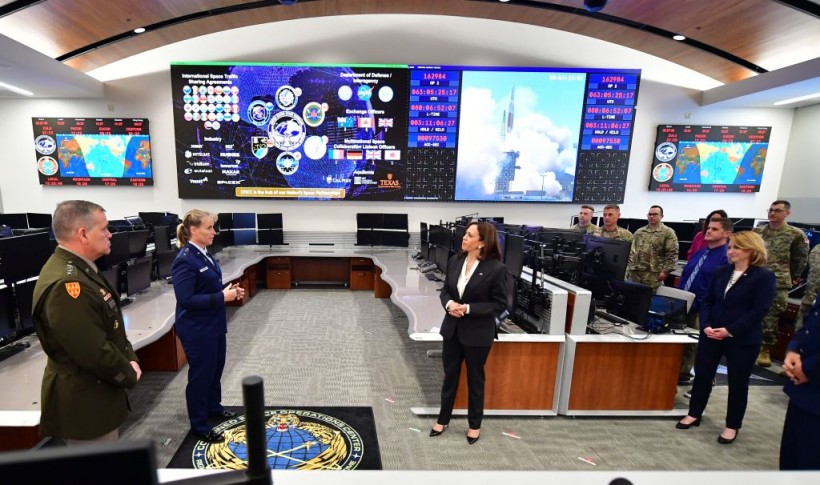The US Space Force has a new unit, the Space Delta 18, that will provide "critical intelligence on threat systems, foreign intentions and activities in the space domain," according to Space.

(Photo : FREDERIC J. BROWN/AFP via Getty Images)
US Vice President Kamala Harris meets with officer during a visit to the command space center at Vandenberg space force Base in Lompoc, California on April 18, 2022.
It will operate the National Space Intelligence Center (NSIC), which is a new intelligence hub at Wright-Patterson Air Force Base in Ohio. Furthermore, a team of 345 civilian and military personnel will be deployed there.
With the newly-activated unit, it will help hone the future of the Space Force's innovation and technology acquisition. It is tasked with identifying kinetic and non-kinetic threats.
Kinetic threats are the ones that can cause physical damage or degrade US satellites and their other assets. On the other hand, non-kinetic are the anti-satellite weapons that utilizes directed energy, signal jamming, and other means that can disrupt the operations of the satellites.
"As the Service Intelligence Center for the US Space Force, NSIC will be positioned to support US and allied space decision makers at an absolutely critical moment in the history of space development. In the years ahead, the environment will only become more contested. And as we move forward, NSIC will be relied upon to produce and analyze scientific and technical intelligence related to space for the entire nation," said the United States Director of National Intelligence Avril Haines.
Years in the Making
The US Air Force has operated its own NASIC at Wright-Patterson since 1993 but Space Force has been pushing for its own space intelligence unit since 2020. This results in the Delta 18 unit that will help them anticipate the demand for additional space intelligence that will support foundational, tactical, operational, and strategic levels.
The need for this unit was driven by China and Russia's anti-satellite capabilities. Recently, a Chinese satellite was seen to have dragged a defunct navigation satellite into a graveyard orbit. Moreover, Russia has performed anti satellite tests that were destructive when it created hazardous orbital debris fields.
One of the non-kinetic threats is the growing presence of Russian and Chinese interference with, disruption and destruction of unclassified commercial and government satellites by means of electronic jamming and physical attacks. Furthermore, they are also increasing their capabilities to counter the US anti-satellite weapon.
With the Space Force, more assets will be required to ensure the space domain's safety. It can be done by developing and improving the space situational awareness program. It will also be helpful to detect and characterize potential threats that are there in space.
In short, the US Space Force will help and protect the US in the space domain.
Establishing this new command helped the US address the dangers and steps to secure the space domain. It ensures that the access to space for national security, economic prosperity, and scientific advancement will be preserved and protected. It will provide an essential role for national security and the growth of the US economy.
It will help the United States launch a more strategically effective defense system and ensure that the US is prepared for the future of its space assets.
Related Article: NASA and Space Force Order Several Launches from SpaceX and ULA for National Security Missions!
This article is owned by TechTimes
Written by April Fowell








